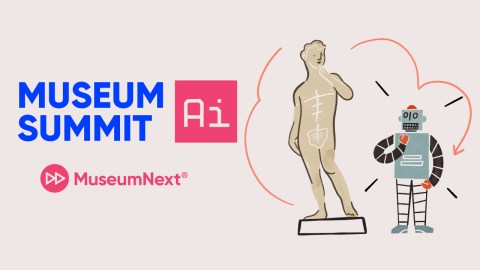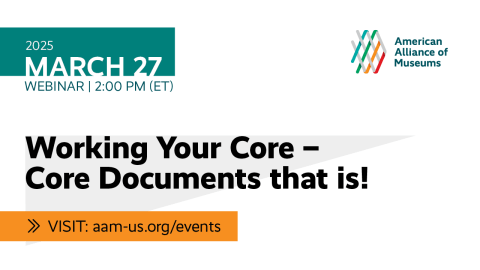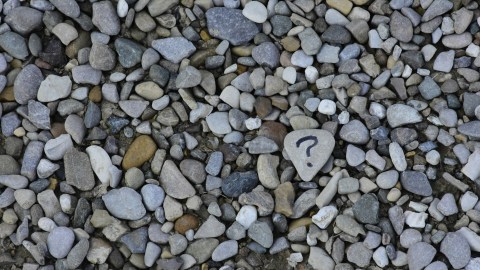
This visual Data Story is based on findings from the 2023 Annual Survey of Museum-Goers, a national survey of American museum visitors from AAM and Wilkening Consulting. Every year, the survey partners with individual museums to research their audiences and yield insights about their behaviors and preferences, both on an institutional and national level. Interested in joining the 2024 edition on the themes of repeat visitation, imagination, and hope for the future? Sign up by February 28, 2024, for a special early bird rate.

There have been a lot of changes in how people live their lives over the past five years, largely (but not exclusively) due to the COVID-19 pandemic. While some of these shifts may benefit museums, others mean museums have more competition and barriers, resulting in greater pressure on attendance.
To find out how these shifts are affecting museum-goers, we asked them to consider how their visitation to museums has changed in the past few years, including:
- The activities they are doing more of, and why
- The activities they are not doing as much of (or at all), and why
- Other concerns they have about visiting museums
For the most part, respondents were not that forthcoming about what kinds of activities they are doing more of. There was really only one thing that stood out: spending more time outside. It may have started as a result of public health precautions they were taking during the pandemic, but for these individuals, going outside has become an enjoyable habit.
“I am spending much more time in public parks, forest preserves, public events when there are fewer other visitors.”
When it comes to the things respondents are not doing as much of…well, it’s like we didn’t even ask the question.
That is, hardly anyone answered it. Why not? We don’t know. Maybe because it was the middle question and got skipped over. Maybe it’s because people don’t want to admit they have pulled back on some things. But the most likely answer is that most people don’t really think their own habits have changed that much/they have gone back to what they think of as “normal,” so they had no answer here.
So what did respondents want to talk about instead? Their concerns.
Nearly half of respondents (42%) shared concerns that are resulting in fewer museum visits. These concerns largely fell into four equal categories:
- Cost of visiting (or, perhaps, doing anything discretionary)
- “Too poor to do anything fun now :(“
- Crowds
- “Crowded spaces still make us uncomfortable, so we try to wait until the buzz of an exhibit has died down a bit before seeing it.”
- Personal health concerns
- “For folks who are immunocompromised, the pandemic is still a reality.”
- And everything else.
- There were a lot of other concerns, but they were a mishmash of things and nothing else stood out as significant.
Fortunately, museums can address most of these concerns through things like coupons and discounts, sharing when “less busy” times are, and even having special hours for those who have health concerns.
Interestingly, respondents also wanted to give museums some advice. 21% wrote in something we considered “advisory,” and their advice covered a wide variety of things. But only one theme stood out as significant:
They want things to be happening at museums.
“Alternative hours of operation such as evening events, ‘date nights,’ happy hour. After COVID, I want to engage more with people with the backdrop of a zoo, museum, etc. Also, anything new for kids is helpful such as experientials, learning opportunities. These places need to be opened up in a way that people feel they can just sit and be somewhere other than the four walls of their own home!”
While this advice of “more” may feel like we need to double-down and do more exhibitions and programs, that’s not necessarily a sustainable choice for many museums. (We’ll be looking at this tension in the 2024 Annual Survey of Museum-Goers).
What’s heartening about all of these comments is that they virtually all come from a place of care. Museum-goers care about museums and want them to have a more vibrant and impactful future for all of us.
“It’s critical for a museum to support robust curatorial missions and risk takers. I hope that the museum can find the courage to make gains and take risks and bring work that isn’t already canonized elsewhere. Otherwise, the museum will lose the next generation of philanthropists. We cannot be places where everyone is over 70 and remembers the good ol’ days. We need to create the good days for today’s aware and informed citizenry.”
Annual Survey of Museum-Goers Data Stories are created by Wilkening Consulting on behalf of the American Alliance of Museums. Sources include:
- 2023 Annual Survey of Museum-Goers, n = 107,187; 228 museums participating
- 2023 Broader Population Sampling, n = 2,002
- 2017 – 2022 Annual Surveys of Museum-Goers
*Data Stories share research about both frequent museum-goers (typically visit multiple museums each year) and the broader population (including casual and non-visitors to museums). See the Purpose and Methodology (Update) Data Story from September 12, 2023 for more information on methodology.
More Data Stories can be found at wilkeningconsulting.com/data-stories.








Both the Library of Congress and the National Gallery of Art in Washington, DC offer alternative hours of operation. The Library of Congress hosts happy hours on Thursdays from 5-8 pm. This event is free, but guests still need to reserve a ticket. Meanwhile, the National Gallery of Art hosts Gallery Nights during the fall season. Gallery Nights are also free, but tickets are distributed through a lottery system. These events serve as excellent examples of affordable alternative hours of operation that benefit both the museums and visitors.